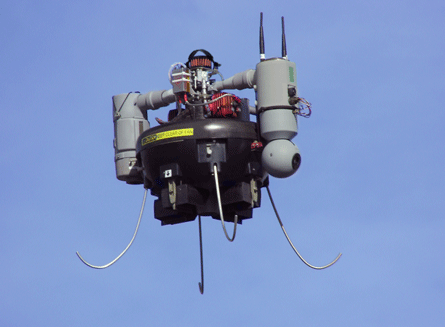Honeywell has received the first production contract for the US Navy version of the RQ-16 micro air vehicle (MAV), now named the Tarantula Hawk, or “T-Hawk”.
After starting development with the Defense Advanced Research Projects Agency in 2003, a Block 1 version of the ducted-fan aircraft has been tested in
A new Block 2 design, featuring a gimbaled sensor and an electronic control unit for the propulsion system, will start delivery in the second quarter of 2009. In all, the USN has ordered 90 T-Hawk systems, 180 vehicles, plus ground stations and support under a new $65 million contract.
 |
|---|
©Honeywell |
Honeywell expects the first production deal for the T-Hawk to be swiftly followed by others, including from both US and foreign militaries, says Vaughn Fulton, Honeywell’s senior UAS programme manager.
“There is probably two additional [near-term] opportunities,”
While adding the ECU is intended to ease the strain of relying on ducted-fan propulsion, the gimbaled sensor is the most critical upgrade for the Block II T-Hawk.
“As the gimbal reaches one of its natural limitations,”
The RQ-16 is also selected for the Army’s first “spin-out” of the Future Combat Systems programme.
Meanwhile, the
Source: FlightGlobal.com























